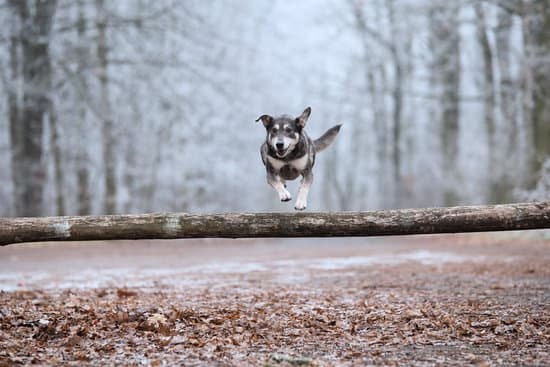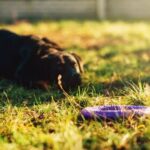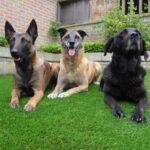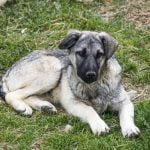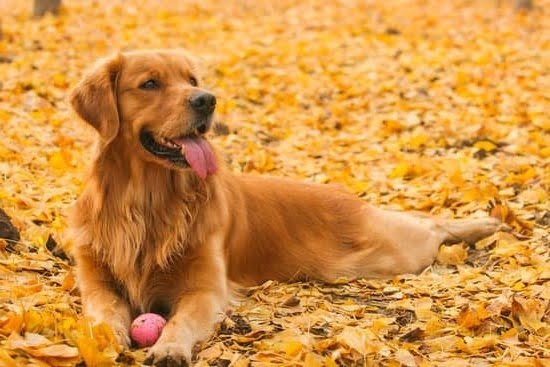Introduction
Quail hunting is a popular sport and hobby that dates back hundreds of years. Quail, also known as bobwhite, are considered a premier game bird with some of the most sought-after wings and meat for consumption. Quail are small and speedy, meaning it takes skill and agility to track them in the field. As such, having the right breed of dog is essential for successful quail hunting trips. Properly training a quail hunting dog is an important part of making sure these trips are enjoyable and productive for all involved.
Defining Key Qualities
Speed: Quail hunting dogs should have the speed to keep up with a hunter. The breed of dog should be chosen to fit in with the environment; for example, a small dog such as an Italian Greyhound or Whippet is best suited for faster terrain like an open field. It should also have enough stamina to keep up with hunters on long excursions.
Agility: Agility is important for quail hunting dogs when quickly maneuvering through brush and trees. Breeds that naturally possess high levels of agility such as Jack Russel Terriers and Pointers may be preferable for this particular purpose.
Discipline: Discipline is essential in the training process for quail hunting dogs, since without discipline during a hunt it would be impractical and potentially dangerous. An effective way to teach discipline to a dog is by mounting a series of commands that it must complete before given a reward, like verbal commands such as ‘come’ and ‘sit’ every time they are called upon. This also helps train them to alertly respond to sound cues, which may help when acoustically tracking down escaped birds. Additionally, these exercises can also help instill more control over their instinctual responses while out in the field.
Choosing a Breed
Choosing the right breed of hunting dog is essential for quail hunting. Hunting quail involves small birds, tight cover and high pressure, so having a talented and well-bred dog is key.
Many popular hunting dogs are typically used for hunting quail. These include pointing breeds such as Pointers, German Shorthaired Pointers and Brittanys as well as flushing breeds such as English Springer Spaniels, Cocker Spaniels, Boykin Spaniels and Nova Scotia Duck Tolling Retrievers.
The traits of any hunting breed should be considered but some basic qualities for a hunting dog that specializes in tracking quail include strong scenting abilities, stamina and the ability to work close. Pointing breeds should have strong desire to point and field trial consistency combined with slower speed which will help them stay within gun range without busting birds. Conversely, flushing dogs need quickness yet have the self control to flush in close quarters when asked.
Above all else, having an experienced breeder or trainer who knows how each breed works will help ensure you select one that is suited to your level of skill while meeting all specific criteria needed when targeting quail specifically.
Training Basics
Step 1: Get a Dog Suitable for Quail Hunting: It is important to choose a breed of dog specifically bred for hunting quail, such as the German Shorthaired Pointer, Brittany Spaniel or English Setter.
Step 2: Begin Training at Home: Start teaching the basic commands and obedience training such as sit, stay and come. Work on these in everyday situations along with leash walking.
Step 3: Introduce Bird Scent: Once the basic commands are mastered begin introducing the scent of birds by using an old feather or dummy used for dog training. Let your dog follow it’s nose around different obstacles as a reward for finding the scent from the bird scent item.
Step 4: Introduce Cover Scents: Progress onto cover scents such as corn or another food-based scent used to lure quail next to where they live. Use this cover scent when teaching birds points, where dogs should point when they find birds but not chase after them. Letting your dog go near the birds will disrupt their habits so introduce gradually and reward appropriately when you get desired behavior right away when dogs alert you with a freeze and point position upon reaching cover scent signals.
Step 5: Practice out in the Field: Find places closest to you that have fields that can hold birds, preferably areas with hedges and tall grasses in rural areas or hunting preserves. Be sure to introduce new smells regularly and continue obedience exercises even in new environments such as protecting patterns, whistle commands, following hand signals for retrieving, and tracking prey on farms or hillsides. Additionally, work on field drills by setting up multiple quail decoys around tight corners or off of beaten paths; rewarding competition games like “hunt-the-hidden-bird”. You will see success from all of these methods which instills confidence in your dog during real hunt scenarios!
Early Socialization
The early socialization of a quail hunting dog is vitally important for their development. Exposing your pup to a variety of people, animals and environments will ensure that they are confident and trust humans by the time they start their training. This early engagement helps to create a positive bond between you and your puppy, which makes them more willing to accept their training. Even if the pup is not yet ready for formalized training, introducing them to different sounds, textures and scenarios helps it understand its place in the world. It is easier for the owner to reinforce the desired behaviors when your dog is familiar with them. Therefore, do not overlook any parts of this early socializing process in preparation for a successful quail hunting season.
Understanding Prey
It is important to understand the prey, like a quail, that you will be training your dog to hunt as this will inform how you train them. A thorough knowledge of a quail’s anatomy can help you better prepare your dog and create an effective routine. Quails are known for their unpredictable flight patterns, so it is important to get your dog used to chasing after them and learning the movement of their wings. To more effectively set up training sessions, research the habitat preferences of quails, including what time of day they prefer and which areas are likely to have the highest population density. Tailor training sessions according to these preferences to ensure your dog knows what to expect when out in the field.
Obedience Training
When obedience training your quail hunting dog, it is important to start off with basic obedience drills. Start with simple commands like sit, stay, heel, and come when called. Practicing these commands regularly will help the dog learn each command quickly and you can then increase the difficulty level as the dog progresses. For instance, start by having your dog sit and stay while holding a treat in front of him. Once he understands what you are asking him to do and can demonstrate repeatedly without hesitation, you can increase the distance from which he must obey; calling him from across the room or field to execute a command successfully. This will show your dog that his commands should be followed no matter where he is or what the circumstance may be. With enough practice, your dog will be able to respond and understand commands with ease and reliability on any quail hunting expedition!
Testing and Refinement
When training a quail hunting dog, it is important to obtain the services of certified trainers who understand how to bring out the best in these animals. This increases the chances of success and makes the process more efficient. The certified trainers should be familiar with situations that might be encountered during an actual quail hunt such as working with birds on land, flushing them out of brush or trees, tracking wounded birds that have moved on from the area, and steadying themselves so as not to scare away any nearby birds with noise or movement. It is also important for trainers to periodically test and refine their training methods when working with a quail hunting dog. This helps ensure that the dog retains what they have been taught and can perform their assigned tasks efficiently in different environments and scenarios.
Continuing Education
Books: Books about specific quail hunting techniques, as well as tracking, point training and scent detection should be readily available for your dog. Veterinarians and local pet stores will often have a selection of these types of books.
Seminars: A variety of seminars are often hosted by experienced quail hunters. These will teach the basics of quail hunting and can include everything from gun safety to reading animal behavior. Ensure the seminar involves hands on activities so your dog can benefit most from it.
Hunting Clubs: Depending on where you live, several hunting clubs may be available for your dog to join. Many clubs offer field trips and activities as part of their membership that are designed to boosts your dog’s skills as a hunter. Taking part in such field trips or activities will also help build connections within the community, which can be a huge bonus when it comes to honing your skills in quail hunting!
Conclusion
Having a properly trained quail hunting dog is essential for a successful hunt. A good quail hunting dog should have exceptional searching abilities and tracking abilities so that they can detect the scent, position and sound of the quail. They also need to be obedient with commands given by their handler and exhibit excellent retriever skills in gathering fallen or injured birds with minimal physical effort. Further, they must demonstrate proper respect when alongside other hunters, be able to flush birds at a safe distance past the gunner, and remain focused on tasks until its pursuit is finished. Ultimately, having a well-trained quail hunting dog provides hunters with an invaluable tool for locating shots and for retrieving downed game in thick cover.

Welcome to the blog! I am a professional dog trainer and have been working with dogs for many years. In this blog, I will be discussing various topics related to dog training, including tips, tricks, and advice. I hope you find this information helpful and informative. Thanks for reading!

